It wasn’t Christmas yet, but it was dang close. The very next day would be Christmas Eve. My buddy Greg and I decided to grab Christmas trees for our families up on the Hat Creek Ranges this year because we both had little kids at home, and it was forecasted to be frigid cold. Normally, we bundle everyone up, drive as far as we can into the peaks, and hike up to find the perfect specimen for our home.
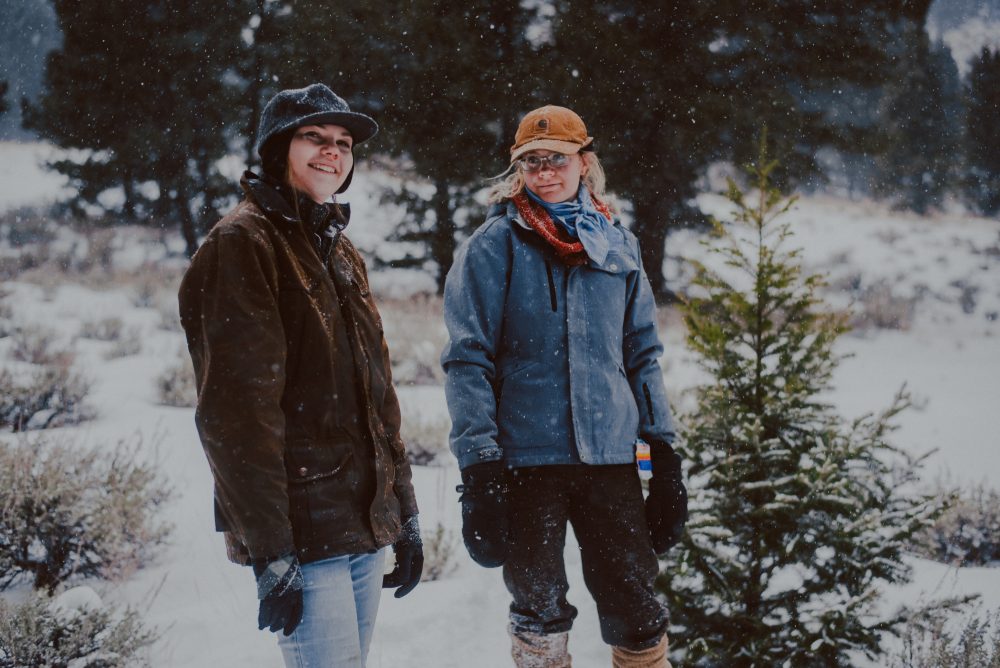
But this year with the cold was a little different. Subzero temps were predicted, and that was another cause for concern: I was still missing two black Angus bulls up in the wild country of Hat Creek. I had to locate them.
The snows already were drifted deep across roadways up on the range, and that method of travel with a vehicle was hopeless. Even horseback, It would be hard on them, because of the sheer distances through deep snow. To get to where the bulls were last seen would be nearly 20 miles one way.
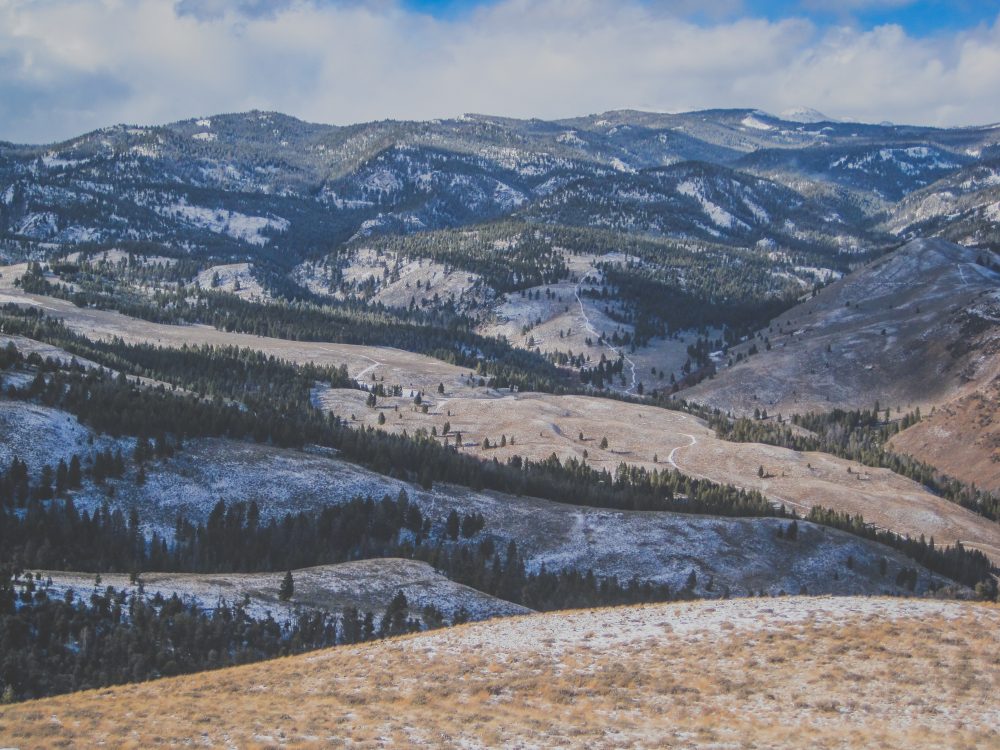
I had called Greg several days before. “Hey, buddy. Do you still have those sleds?” Sleds is what we colloquially called snowmobiles. He had some older models in the backyard on a trailer last I recalled.
“Sure do. And I just went over them, too. Should be good to go.”
So together we hatched our plan, that regardless of weather, we would go hunting—for the quite elusive perfect pair of Christmas trees and black Angus bulls.
Two bulls with one stone, so to speak. And some Christmas trees to boot!
The brittle and brutal cold morning came when Greg showed up with the aging sleds. They had some wear on them, but they would do. There was a little bit of breeze out of the north, and the mercury was still below 0.
I met him at his idling Dodge pickup as he rolled down the window. He was hooked to the sled trailer. “Still good to go?”
“Yep.” Clouds of steam came out of his mouth with one word. “But dang, it’s cold up here.” He had come from Salmon, Idaho, down the river about 50 miles. It was a little warmer down there. The high Pahsimeroi had a way of becoming an Arctic frost pocket. Austere valley combined with 5500 feet base elevation holds no heat on crystal clear winter nights.
We loaded clothing and gear (and we brought a small bow saw for tree harvest!) and headed out to the Salmon River, where we would start up the sleds and head into the backcountry. It wasn’t long before both sleds were idling and loaded with winter survival gear and that saw.
And we were off. Greg sent me in the lead, as I knew the way. We agreed to cover some 50 miles in a loop tour, trying to cut tracks (of bulls) on the far side of the Hat Creek ranges first. The frigid air blasted over the windscreen into my face. I thought I was protected by a balaclava pulled over my nose and mouth, but the icy blast quickly worked around my sunglasses and I thought my eyeballs would freeze solid.
So I ducked down low, and scanned the trail ahead through the scratched and translucent screen. I stole a glance under my armpit, jockey style, to check out my buddy Greg.
He was doing the same thing. Head down low. It meant he would not see to stop in time if I stopped or slowed down too fast. The one consolation was that he was far better on sleds than I. He used to guide backcountry tours in Vail, Colorado.
The snow deepened as we gained elevation. In just a matter of 15 minutes, we had taken on 2000 feet, and the snow was now over 3 feet in depth. It meant that we’d have to keep our speed up on the unbroken powder. It alternated with thick wind-packed crust, and we both knew that if we dropped below 50 mph, we’d be sunk. Literally.
The country was transformed by the blanket of white. Pine and fir trees were cloaked with thick powder, foaming from branches in the light breeze along the ridges. Drift patterns left sweeping curves and frozen waves on the ridges in the sage.
The sagebrush ocean was no more. Instead, it was covered with an unbroken mantle of deep white. When the trail would take us across creek bottoms, occasionally, Greg and I would stop, shut the sleds down and listen. The breeze didn’t exist in the canyons. The very quiet murmur of the creek could be heard under the snow—but nothing else because of the baffle of white.
Our 50 mile loop came to an end, and we hadn’t cut a hoofed track. Not a bull, elk or deer crossed our trail; they had all headed to the Salmon River canyon, where on the south slopes there was still open ground. There were tracks a plenty of foxes, coyotes, occasional wolves and snowshoe hares. They were lords of the snowlands, and they alone held reign over the territory while it was held in the grasp of winter.
Either my bulls were dead or in the low country. I was stumped.
On the way out of the Big Hat Canyon, Greg and I found acres of smaller Douglas-fir trees. It was our personal Christmas tree lot! We deliberated for an hour or so, warming up a bunch in the process. Coming out of the blast of relentlessly moving air on the sled, stopping felt warm. Besides, we were “postholing” our booted feet through deep snow—a labor of love on the quest for a tree.
It was invigorating.
From the hundreds of fir trees clamoring for our attention, we selected two beauties. They were full on all sides—I felt certain the families would approve. Greg was happy. I was happy.
And we were certain the girls would be happy (I had all girls, and Greg had nearly all girls!).
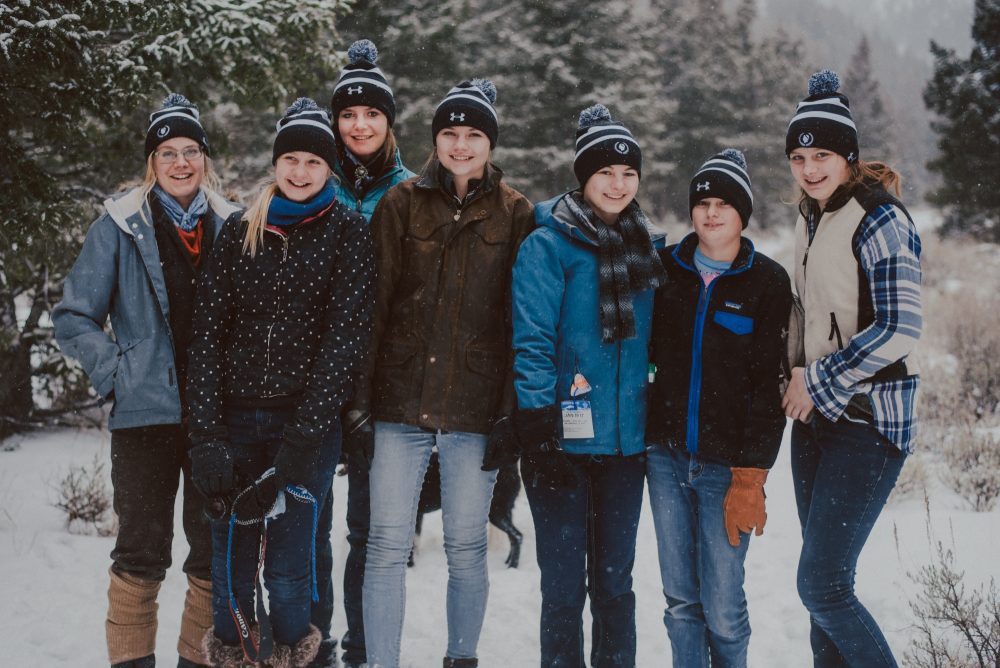
We strapped our prizes on the front of the sleds, not realizing that they would be welcome windbreaks, but they sure were life-changing on the wind-chill generating sleds.
We trundled our way, downhill now, through the steep walled Big Hat canyon, eyeing for tracks along the way. This, after all, was one of the “last seen” areas of the bulls. It’s hard to hide a one ton black hided bull in the world of white, and I was sure we would find them here. We were running out of options.
Nothing.
We broke through the low timber and had dropped back down into the snowbound sagebrush ocean. The rolling hills marched out before us toward the sun, which was now getting hopelessly low in the sky. These were the shortest days of the year, and already I could feel the loss of what little heat it generated at this time of winter solstice.
With the low angle of light, shadows deepened beautifully in the micro-landform of snow drifts and patterns of layering across the windpacked open. The macro landform of the mountain foothills deepened with blue relief in contrast to a rosaceous tinted glowing white created by the low sun.
We cruised around a ridge and went into the shade of the mountain. I could feel my core temperature dropping. It was going to be bitterly cold when that sun dropped permanently. But it would be another half hour before it would.
Greg and I swept through a big turn that brought us out from the shade into the sun of the late afternoon. I still led through the unbroken snow, but up ahead, highlighted by the low angle light, a trail crossed ours with deep blue tracks in the powder.
It looked as if it could be wolves.
I slowed down my machine to just crawling along, being careful not to get stuck. It was important to leave just enough forward momentum not to sink. I leaned over the side of the sled, forward, to try to suspend my body over the tracks while moving to get a quick glimpse of who they belonged to.
And I looked deep into the divots in the wind pack and saw the clearly defined mark of bull tracks.
I pointed the tracks out to Greg; he nodded. We slowed to a stop on a steep hill. No problem regaining motion here.
We got off our sleds and with field glasses scanned the bottoms. There was an old homestead below us, now owned by some friends from Minnesota. They had a lovely summer cabin down there, off the grid, and the tracks looked like they headed down to that area.
And so did we.
We pulled the sleds up to the cabin, and found more tracks, these crisscrossing the area around the house. Venturing farther behind the house, now on foot in the lessening light, we crossed into a small fenced pasture where there was a lone tree.
The gate was open, and bull tracks went back and forth through it. The tree marked a grave site from the homesteaders who first claimed this valley for their own back in the early 1900s.
And there, in the cemetery, in the tall grass around the headstones, in the now quite very cold shade of the tree were two snow-dusted Angus bulls, apparently paying their respects. Why they stood here of all places I will never know. But they seemed content to have found a little bit of cover, and tall grass in that old cemetery plot.
Greg and I exchanged glances and laughed. It was only the most unlikely place to find them. I was grateful for their tracks that had not yet drifted in; any longer, and they might have been in trouble as the snow got deeper.
We gathered them up, first on foot, and once on the trail back to the river, with the sleds, coaxed them toward home and hope. They were recalcitrant at first, but then, after giving second thoughts, they complied with what they knew was better: home and a hay pile.
They still had many miles to go, but something in them told them it was worth it.
Greg and I dropped them along the trail, figuring to go get them another day, as it was still 12 miles to our pickup by the river. After all, it was getting dark now, and the bulls would want to bed down.
And besides, we had trees to decorate. It was Christmas Eve Eve, after all.
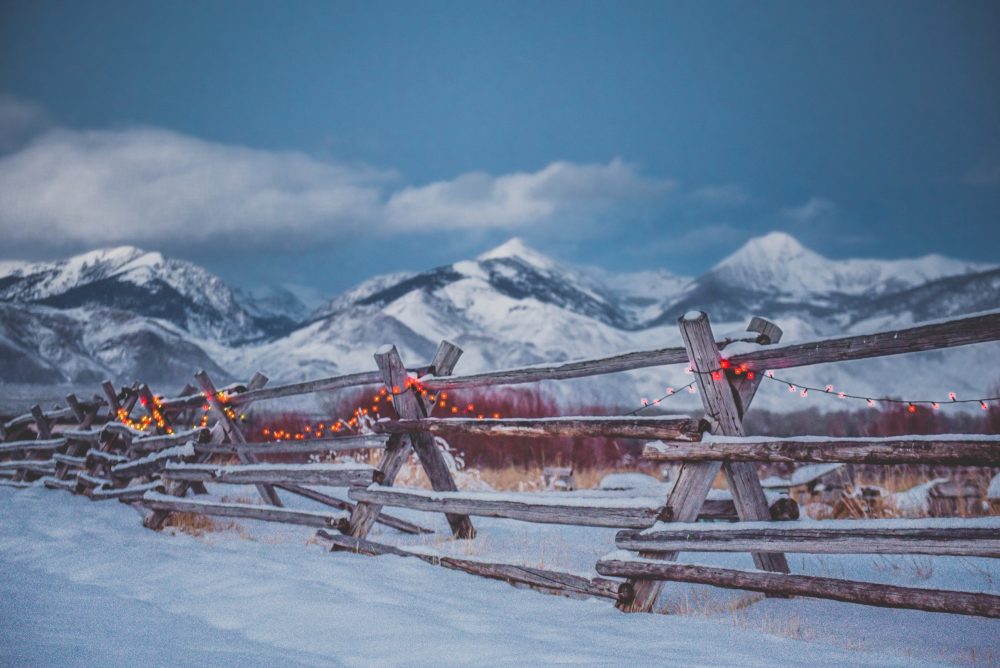
The next morning, the tree looked beautiful in the living room of our cabin in the high Pahsimeroi. The kids, Caryl and I had worked until midnight getting it trimmed out. Now, we were enjoying a morning cup of coffee before setting out to take care of cattle and chores in the snowstorm that was just starting up. As I was ready to step out the door, the phone rang.
I walked over to the wall and grabbed it.
“Glenn, it’s Jess. Down along the river here, on US highway 93.”
“Yeah, Jess.”
“Hey, you got two bulls with your mark on them walking right down the centerline of the highway here in the snowstorm, heading home. You might want to grab them before someone blindsides them on a curve in the snow.”
“Well I’ll be durned, Jess. Thanks so much, Pardner.”
Those bulls must have walked all night.
It was as if they knew. It’s what we do, as humans after all.
There are songs about it.
They, like us, were coming home for Christmas.
In a few minutes, I had the trailer attached to pickup and was heading down valley on the morn of Christmas Eve. Those bulls would get a bus ride home.
Happy Trails.
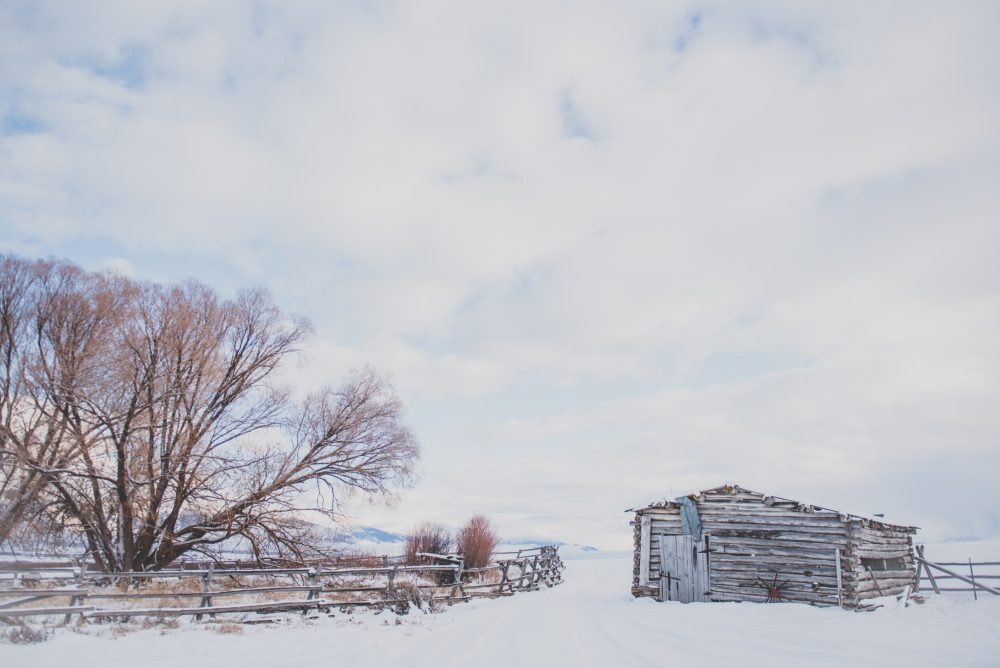



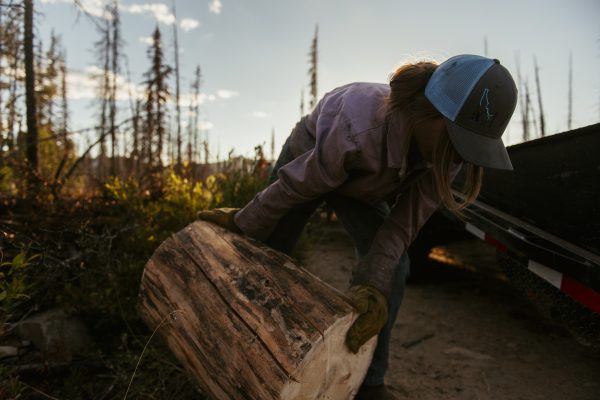



Davie Beard
Love the stories, beautiful pictures and excellent writing. I do read the stories occasionally when I find the time. I used to ride horseback as a kid and rode a kids rodeo. I love the outdoors open range, stunning photos and the animals. Where did you learn to write so well?
Caryl Elzinga
Thank-you! I’ll pass the word on to my photographer daughters! As for writing, I think what makes several of us here good writers is that we all love to read- fiction, essays, non-fiction. All my daughters are readers thanks to my wife, although their tastes vary significantly. -Glenn
Pat Boice
You should compile the stories and photos into a book one of these days – maybe when you retire! I love your stories.
Caryl Elzinga
Thank-you, Pat!
erik storlie
Tamara and I loved the account of finding the two black bulls in that little graveyard on our property. That must have been years ago, before we managed to get the old fences reasonably continuous.
We ate some delicious Alderspring beef two nights ago.
Yes, indeed, these stories and pictures deserve a book.
Merry Christmas to all.
erik storlie
Hi Elzingas,
I’m tickled to read this story again. The McGuire cemetery a few years ago added a memorial to Iron McGuire, and may some day welcome Helen McGuire. The long-term residents are Dave McGuire, who at age sixteen was kicked by a horse and buried about 1935, and Bill McGuire, whose ashes were placed sometime in the 70’s.
Tamara and I keep working on the fences, which cattle are always eager to defeat. We’re grateful the Elzinga stock are in-herded, so they’re never a problem for us.
At the end of the summer we carry some twenty pounds of Elzinga burger back home in a Yeti–and will enjoy some over Christmas.
Merry Christmas to all, May it be a blessed one,
Erik and Tamara
Shirley
I read every single story you send out, Glenn. Some make me laugh, others bring tears to my eyes. But I always enjoy reading every one. If you compile all your stories into a book, or a two-book series, I’d be one of the first to buy them! Your writing puts the reader in the scenes of your stories so they come to life. I grew up on a farm and know all the hard work, long hours and care it takes for the animals. I admire you and your family. God Bless You All.